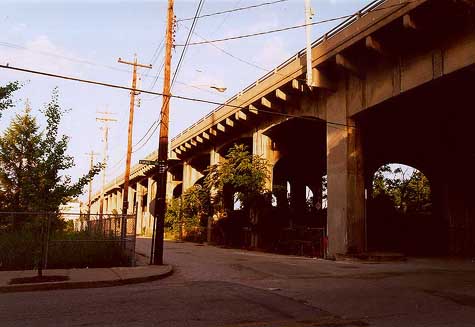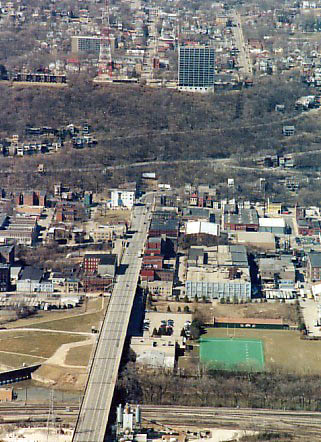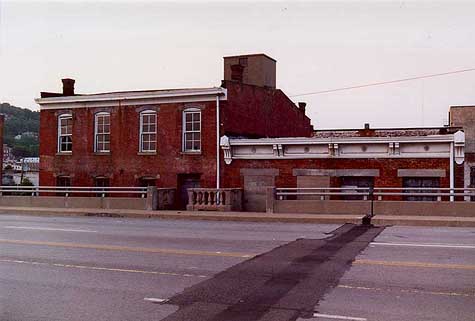


[Larry Stulz photo]
Aside from the abandoned entrance and exit ramps, the most distinctive feature of the 8th St. Viaduct is its western end, where it grazes buildings to either side. These warehouses and commercial buildings predate the viaduct, some dating from the 1870's. In about ten examples, upper floor windows of these buildings were turned into doors, and short connections were made with the viaduct. It is unclear as to whether building owners or the state paid for these connections, but judging by the railings it appears that they were all built at the same time as the viaduct. Along with the abandoned entrance and exit ramps, these walkways are the only places where the viaduct's original railings survive. The original railings did not meet later safety standard and so were replaced by typical expressway concrete barriers.

Here are examples of the upper floor connections to adjacent buildings.
Notice the short section
of original railing.
In the 1930's a tunnel through Price Hill was proposed
for the viaduct's western end, connecting 8th St. with Glenway Ave. further
up the hill. This tunnel was never built but the viaduct still became
an important part of the city's road network. The once impressive
viaduct has in recent decades sunk into a mild state of disrepair but is
still sees heavy automobile and bus use.
In 2008 the viaduct was closed for major rehabilitation work. The bridge over railroad tracks at the western end of the structure is being replaced and the ramp between it and lower 8th St. has been permanently closed.